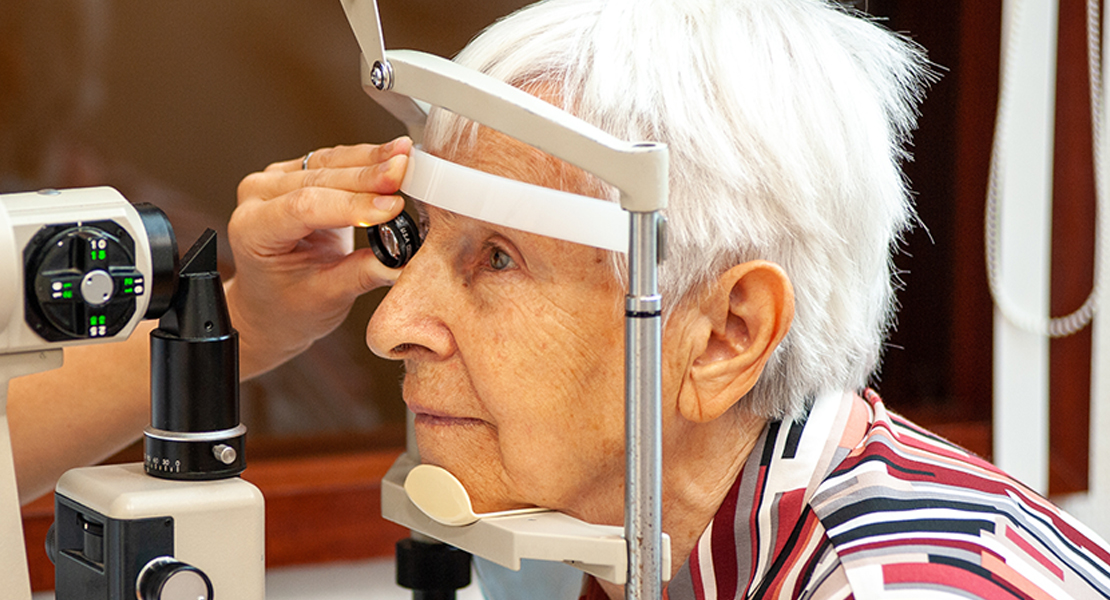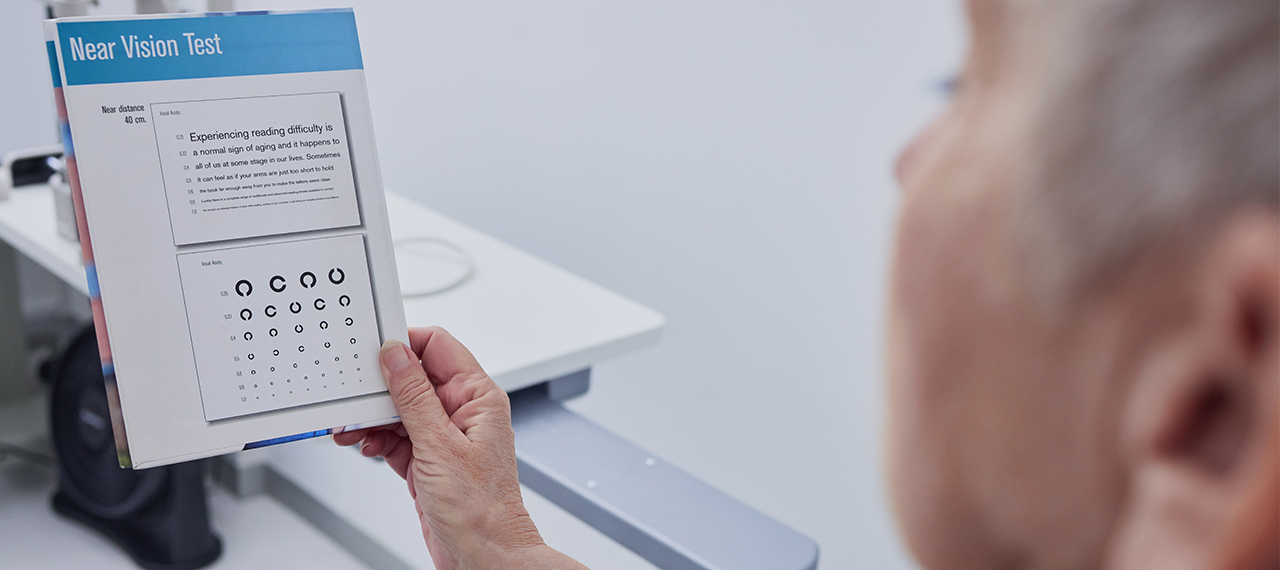Toric lenses are a specialised type of intraocular lens (IOL) or contact lens designed to correct astigmatism, a common refractive error caused by an irregular curvature of the cornea or lens of the eye. For individuals undergoing cataract surgery, toric intraocular lenses offer an effective solution to restore clear vision while addressing astigmatism. Unlike standard spherical lenses, which have a uniform prescription across the entire surface, toric lenses have different optical powers at different meridians to meet the specific needs of individuals with astigmatism. This article explores the role of toric lenses in cataract surgery, their benefits, and key considerations for patients.
How Toric Lenses Work in Cataract Surgery
During cataract surgery, the eye’s natural lens, which has become cloudy, is removed and replaced with an artificial intraocular lens (IOL). Standard IOLs can correct vision but do not address astigmatism. This limitation means that patients with astigmatism may still experience blurred or distorted vision even after the cloudy lens is replaced. Toric IOLs, however, are specifically designed to address astigmatism, ensuring a more precise correction that significantly improves visual clarity post-surgery.
The defining characteristic of toric lenses is their specialised shape. Unlike standard IOLs that have a symmetrical spherical surface, toric lenses feature an asymmetric, toroidal design. This design provides varying levels of power across different meridians of the lens, compensating for the irregular curvature of the cornea. As a result, toric lenses ensure sharper and more stable vision, reducing common astigmatism-related distortions such as blurring and ghosting effects.
One of the most critical aspects of toric IOLs is their precise orientation within the eye. Unlike standard IOLs, which can be positioned at any angle without affecting vision, toric lenses must be carefully aligned to match the unique astigmatic axis of the patient’s eye. If a toric IOL is misaligned even slightly, the effectiveness of the correction can be significantly reduced. To achieve accurate placement, surgeons use preoperative mapping and advanced imaging techniques to determine the exact angle required for optimal results.
The surgical implantation of a toric IOL involves meticulous planning and precision. The surgeon makes tiny incisions in the eye, removes the cataract-affected lens, and inserts the toric IOL. Once in place, the lens is rotated until it aligns with the predetermined axis of astigmatism correction. Surgeons often use reference markings on the eye or laser guidance systems to ensure the lens is positioned correctly, preventing any post-surgical rotation that could impair visual outcomes.
Another important consideration is post-surgical stability. Unlike standard IOLs, which can shift slightly without major consequences, toric IOLs need to remain in their intended position to maintain their effectiveness. If a toric IOL rotates out of alignment, even by a few degrees, it can lead to residual astigmatism and reduced visual clarity. In such cases, a follow-up procedure may be required to reposition the lens properly.
For patients with both cataracts and astigmatism, toric IOLs provide a valuable solution that eliminates the need for additional corrective eyewear such as glasses or toric contact lenses. By addressing both conditions simultaneously, toric lenses not only enhance vision but also improve overall quality of life, allowing individuals to enjoy clearer sight without the inconvenience of external visual aids. Choosing a toric IOL requires careful consultation with an ophthalmologist, who can assess the severity of astigmatism and recommend the best approach for achieving optimal post-surgical vision.

Types of Toric Lenses for Cataract Patients
Toric lenses are available in a variety of designs to accommodate the diverse needs of cataract patients with astigmatism. The type of lens recommended depends on factors such as the severity of astigmatism, individual lifestyle preferences, and the extent of vision correction required. Below is a detailed look at the primary types of toric lenses available:
- Toric Intraocular Lenses (IOLs): These lenses are implanted during cataract surgery to provide long-term astigmatism correction. Unlike standard IOLs, which only replace the cloudy natural lens without addressing astigmatism, toric IOLs have a precisely designed curvature that compensates for the irregular shape of the cornea. They are a permanent solution for astigmatism, reducing or eliminating the need for additional corrective eyewear. Many modern toric IOLs also feature advanced materials and coatings that help improve contrast sensitivity and reduce glare, particularly beneficial for night-time vision.
-
- Soft Toric Contact Lenses: In some cases, patients may still experience minor residual astigmatism after cataract surgery, requiring additional correction. Soft toric contact lenses offer a comfortable and flexible solution. Made from hydrogel or silicone hydrogel, these lenses conform to the shape of the eye and provide a stable, clear vision correction. They are available in daily, bi-weekly, and monthly replacement schedules, offering convenience for patients who prefer a non-surgical enhancement to their post-cataract vision.
-
- Rigid Gas Permeable (RGP) Toric Lenses: These lenses are an alternative for individuals who require precise astigmatism correction and sharper vision than what soft lenses provide. RGP toric lenses maintain their shape on the eye, creating a uniform refractive surface that corrects vision more effectively than soft lenses in some cases. They are particularly useful for patients who experience significant residual astigmatism or irregular corneal surfaces post-surgery. Though they require an adaptation period due to their firmer material, they provide excellent visual acuity and long-term eye health benefits by allowing high oxygen permeability.
-
- Hybrid Toric Lenses: Combining the benefits of both RGP and soft lenses, hybrid toric lenses feature a rigid gas-permeable centre surrounded by a soft outer skirt. This design ensures sharp visual correction while maximising comfort. These lenses are ideal for patients who need the clarity of RGP lenses but struggle with their rigidity. Hybrid toric lenses offer a stable fit and reduced lens movement, making them a suitable option for those with sensitive eyes or an active lifestyle.
-
- Custom Toric Lenses: For individuals with complex eye shapes, high degrees of astigmatism, or unique vision requirements, custom toric lenses provide tailored vision correction. These lenses are designed to meet specific parameters determined by a detailed eye assessment, ensuring a precise fit and optimal clarity. Custom toric lenses are available in both contact lens and intraocular lens forms, allowing patients to receive a solution that best suits their visual needs and lifestyle. Ophthalmologists often recommend custom toric lenses for patients who have undergone multiple eye procedures or have corneal irregularities beyond standard astigmatism.
-
By understanding the different types of toric lenses available, cataract you can make a more informed decision regarding your vision correction options. Consulting with an eye specialist will help determine the most suitable lens based on an individual's eye structure, lifestyle, and post-surgical expectations.
Benefits of Toric Lenses for Cataract Patients
Toric intraocular lenses (IOLs) offer significant advantages for cataract patients, particularly those with astigmatism who require precise vision correction. Unlike standard IOLs, which do not correct astigmatism, toric IOLs provide a targeted solution that enhances visual quality and stability. Below are some of the key benefits of choosing toric lenses for cataract surgery:
- Enhanced Visual Clarity – One of the most notable benefits of toric IOLs is their ability to provide sharper and more stable vision by correcting both cataracts and astigmatism simultaneously. By compensating for the irregular curvature of the cornea, toric lenses reduce distortion, improve contrast sensitivity, and enhance overall image sharpness. This means patients experience fewer visual disturbances, such as ghosting or blurriness, leading to a more defined and reliable field of vision.
- Reduced Dependence on Glasses – While some patients may still require reading glasses for close-up tasks, many experience significantly improved distance vision without needing prescription eyewear. This is particularly beneficial for individuals who have led an active lifestyle and wish to continue their daily routines with greater visual independence. Whether driving, watching television, or engaging in outdoor activities, toric IOLs minimise reliance on corrective lenses, providing a more seamless visual experience.
- Permanent Astigmatism Correction – Unlike external corrective solutions such as glasses or contact lenses, which must be worn and maintained daily, toric IOLs provide a long-lasting correction for astigmatism. Since these lenses are implanted directly into the eye during cataract surgery, they remain in place permanently, ensuring consistent and stable vision without the need for ongoing adjustments. This permanence eliminates the inconvenience of daily contact lens wear and removes concerns about lens misalignment or discomfort.
- Improved Quality of Life – Clearer vision post-surgery has a profound impact on a patient's quality of life. Everyday activities such as reading, cooking, using digital devices, and recognising faces become easier and more comfortable. Additionally, improved visual clarity can enhance confidence and independence, reducing the limitations imposed by poor eyesight. For many patients, this translates into a renewed sense of freedom, allowing them to engage in hobbies and social activities with greater ease.
- Better Night-Time Vision – Standard IOLs may not fully address the visual challenges associated with astigmatism, particularly in low-light conditions. Toric IOLs help reduce issues such as glare, halos, and starbursts around lights, making night-time driving and evening activities safer and more comfortable. By improving contrast sensitivity and reducing distortions, these lenses contribute to a more relaxed and confident visual experience in dim lighting.
- Customised Vision Correction – Toric IOLs are available in a range of powers and designs, allowing for personalised vision correction tailored to each patient’s specific needs. Ophthalmologists use advanced diagnostic tools to determine the precise level of astigmatism correction required, ensuring the best possible surgical outcome. This level of customisation enhances visual accuracy, reducing the likelihood of residual refractive errors and the need for secondary corrective measures.
By addressing both cataracts and astigmatism in one procedure, toric lenses provide a comprehensive and effective solution for patients seeking long-term vision improvement. Their ability to deliver enhanced clarity, stability, and independence makes them an great option for individuals undergoing cataract surgery.

Considerations for Cataract Patients Choosing Toric Lenses
While toric intraocular lenses (IOLs) offer significant advantages in vision correction for cataract patients, several important factors should be taken into account before deciding on this type of lens. Understanding these considerations can help patients make informed choices based on their specific eye health needs, lifestyle, and expectations for post-surgical vision.
- Cost and Affordability: One of the main factors patients must consider is the cost of toric IOLs. These lenses are more expensive than standard monofocal IOLs due to their advanced design and customisation for astigmatism correction. While some insurance providers and healthcare plans may cover part of the cost, many patients must pay out-of-pocket expenses. It is essential to consult with an ophthalmologist and insurance provider to understand the financial implications and explore potential payment options.
- Surgical Precision and Cataract Surgeon Expertise: The effectiveness of toric IOLs depends heavily on the precision of the surgical procedure. These lenses must be placed at a specific axis within the eye to properly correct astigmatism. Even a minor misalignment can reduce their effectiveness and lead to residual refractive errors. Therefore, choosing an experienced and skilled surgeon who utilises advanced imaging and laser-assisted techniques is crucial for optimal results. Surgeons may use preoperative corneal mapping to determine the correct placement and minimise potential errors.
- Possibility of Residual Astigmatism: While toric IOLs provide excellent correction for astigmatism, some patients may still experience mild residual astigmatism after surgery. This can occur due to natural healing variations, slight shifts in lens positioning post-surgery, or pre-existing irregularities in the cornea that cannot be fully corrected by the lens. In such cases, additional vision correction in the form of glasses, contact lenses, or minor laser touch-up procedures may be needed to achieve the best visual outcome.
- Adaptation Period and Visual Expectations: Patients should have realistic expectations regarding the adaptation process and final visual outcome. While many individuals achieve significantly improved vision soon after surgery, it may take a few weeks for the eyes and brain to fully adjust to the new lenses. Some patients may notice temporary glare, halos, or fluctuations in vision, which usually improve over time. Managing expectations with the help of an ophthalmologist can ensure a smoother transition and higher satisfaction with the surgical results.
- Long-Term Stability and Maintenance: Unlike traditional contact lenses, toric IOLs are implanted permanently and do not require daily maintenance. However, their long-term stability within the eye is a key consideration. While rare, in some cases, a toric IOL may rotate slightly after surgery, leading to a decrease in effectiveness. If this occurs, a minor corrective procedure may be necessary to reposition the lens for optimal performance.
- Alternative Vision Correction Options: For patients who are hesitant about toric IOLs, alternative solutions such as monofocal IOLs combined with post-surgical astigmatism correction (glasses, contact lenses, or laser vision correction) may be an option. While these alternatives may involve additional steps, they can provide an effective and sometimes more cost-efficient approach to achieving clear vision after cataract surgery.
By carefully considering these factors, you can work with your ophthalmologist to determine whether toric IOLs are the right choice for you. Understanding both the benefits and potential limitations ensures a well-informed decision, leading to improved satisfaction and long-term visual clarity.
Conclusion
If you have astigmatism and are undergoing cataract surgery, toric lenses provide an excellent solution, offering both clear post-surgical vision and long-term astigmatism correction. With advances in surgical technology, modern toric IOLs provide increased comfort, improved vision, and greater independence from corrective eyewear. Consulting with your ophthalmologist can help you determine the best lens option based on your individual eye health, lifestyle, and visual needs.


